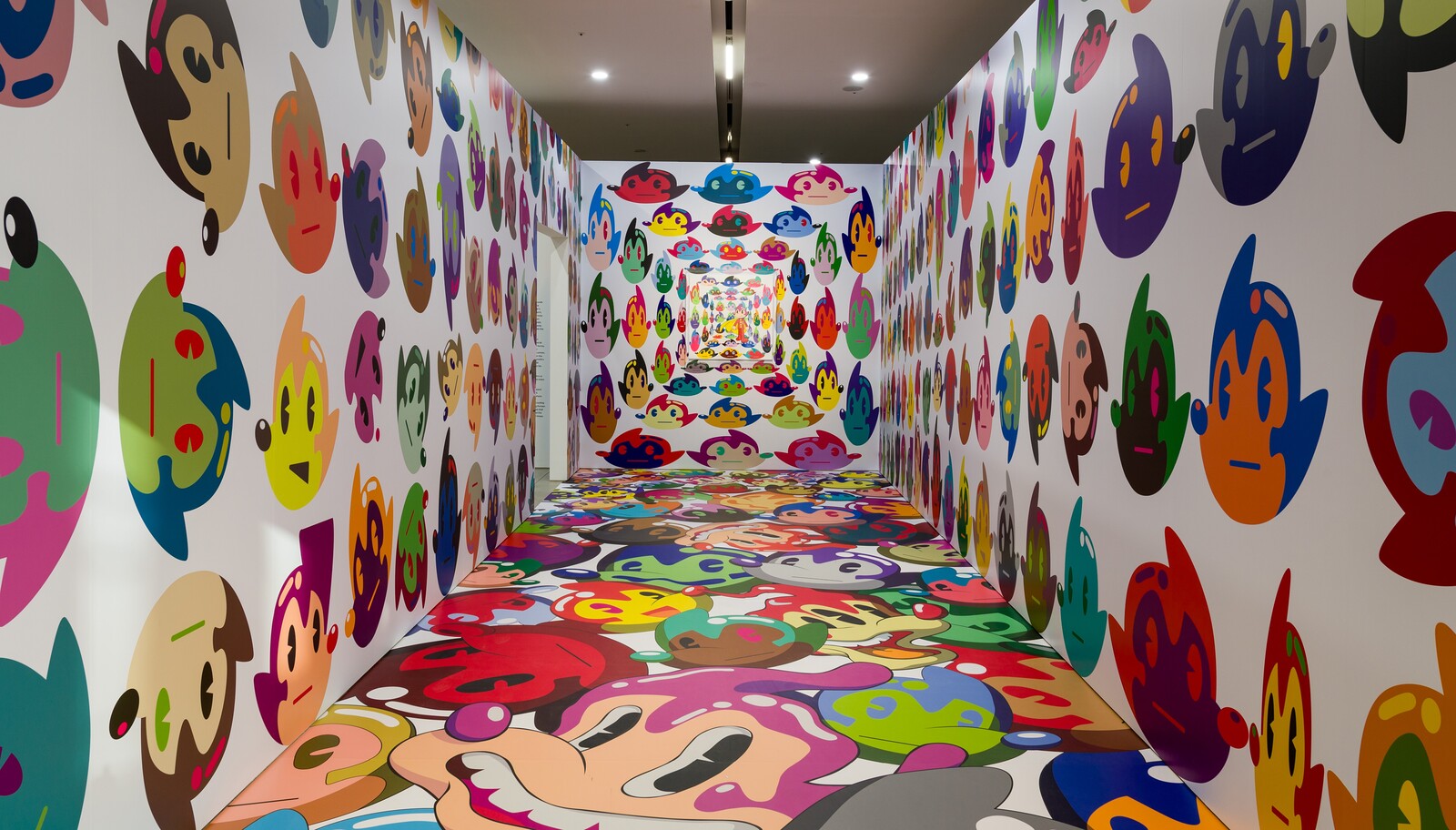2023 Title Match
November 23, 2023–March 31, 2024
B1 Studio 3, Buk-Seoul Museum of Art
1238 Dongil-ro, Nowon-gu
01783 Seoul
South Korea
The 2023 Title Match presents Dongi Lee and Sangwoo Kang, artists who reconstruct the spectacle that surrounds us by appropriating mass media images in ways that “appropriate what is appropriated” or reveal the “trivial and fragile backside.” As the museum is currently focusing on examining the medium of painting, following last year’s examination of sculpture, there is a need to redefine Korean Pop Art. Korean Pop Artists have been exploring form, the unconscious, and social phenomena in the mass media with serious experimentation and a witty attitude, freely incorporating references to art history between the dominant currents of Realism and Abstraction in the Korean art scene.
The exhibition also looks back at the works of Dongi Lee, who has been experimenting with mass media images as one of the topical issues in contemporary art since his early career, and Sangwoo Kang, who represents the opposite side of that experimentation. As such, it attempts to expand and break through the boundaries with the artists’ new works.
The exhibition is organized around the mediatic logic that informs each artist’s artistic universe, rather than simply focusing on the images or materials they have been working with. Both artists share an interest in the social unconscious and visuality, a skepticism of the logic of linear development, and a sensory appetite for uncanny forms. On the other hand, there is a stark difference. Dongi Lee’s work shows a very smooth, hand-painted surface on canvas, reminiscent of a flower garden in Teletubbies. Lee says that there is nothing behind the surface of the canvas, working in such a way that the meaning, intention, and existence of the work cannot be captured at a glance. On the other hand, Sangwoo Kang’s work is reminiscent of a gritty television set of children’s television show or Cinderella’s pumpkin carriage. Kang keeps exposing the back of the set, which differs from the glamorous facade. The artist shows that the vivid imagery is weathered before his eyes as he retrieves it from the memory bank of images in his head.
By making these similarities and differences visible in space, the exhibition analyzes and reconstructs the works of the two artists. First of all, Dongi Lee seeks to overcome the hierarchy and boundaries of art through the medium of painting, utilizing the formative language of Pop Art on top of language-based thought systems such as post-structuralism and surrealism. In addition, the artist tries to deal with the theme of uncertainty in itself or what kind of work can be done in the midst of such impossibility, assuming that the meaning of the work itself or communication with the work has become impossible and the metaphysics of presence has become irrelevant. For the artist, post-structuralism and surrealism are frameworks that can deconstruct fixed meanings, erase the artist, and reveal the world of the unconscious. He attempts to formatively translate these language-based philosophies through the logic of painting. As a method of formulation, the artist deconstructs meaning by juxtaposing incompatible entities, inviting the viewer to rethink the distinctions between them, hiding the artist’s presence by borrowing methodologies from other artists, including Pop Art, or presenting works that can be interpreted in various contexts depending on the viewer’s own background. This methodology is further differentiated by its mass media qualities. The current exhibition focuses on the coexistence of the opposing social unconsciouses of “war, violence, and capital vs. the liberated peace of rock ‘n’ roll and hippies” as the core concept of Lee’s period of unilateral media. For works created during his digital multimedia period, the exhibition focuses on formative experiments. In this vein, the exhibition presents Fragmentation series, a kinesthetic reconfiguration of pastiche and post-structuralism with reference to digital forms; Eclecticism series, which are compositions conceptually reconfigured on screen-like canvases; and Atomaus series, which anticipated the objectified body after post-structuralism. One of the new works is the artist’s response to an “objectified fake Atomaus,” which is generated from keywords using two AIs that operate on the basis of language—the foundation of the artist’s theoretical framework—while existing as non-human objects. In addition, Lee’s public art, commercial collaborations, and works in the wanted flyer format encountered people outside of the museum, resulting in happenings with non-spectators. In this exhibition, they are reproduced to show how the boundaries and hierarchies of painting were revealed when it was transformed into a popular medium for the masses.
Sangwoo Kang explores how individuals defend themselves against powerful social desires and pressures symbolized by mass media images. The artist’s method is to capture familiar yet unfamiliar, and uncanny images from his personal memories or social images that he has encountered as an individual. These images stand out in the homogenized mass media because they offer a glimpse into the model that society imposes on individuals or because they are daydreams of a time we’d like to go back to, replicated in high definition online and playing on repeat somewhere. Accordingly, the exhibition essentially considers the artist’s childhood to the present as one layer, the conflict between the individual and society as a paired opposition. The artist’s method of formulating the captured images is considered as the other layer of the exhibition’s structure. In particular, the following are the implications of the formulation. First, the artist creates an image that is transformed from the three dimensions (reality) to the two dimensions (image) and then again to the two dimensions (mass media). In doing so, he asks where the ‘real’ exists between the virtual and the real, the two-dimensional and the three-dimensional. Second, he reveals that the pressures of social roles, functions, and competencies are directly tied to the shaping of images, showing how the handmade, the insignificant, and the signatures of legendary cartoonists can counteract social models and clichés. In addition to this existing body of work, his new work in the exhibition addresses things that cannot be returned to and that are lost in linear time by disrupting temporality through overlapping and compressing the nature of multiple times and mediums, as if in a multiverse where multiple worlds exist simultaneously, or where “the future of the past is the present.” In the current exhibition, in particular, the artist aims to provide a new sensory experience to viewers by expanding the scale from small three-dimensional figures to the exhibition space.
Are media that are far removed from new technology, such as images from old mass media or paintings, retro or outdated? Does Korean Pop Art only appear unsurprising and commercial? Are individuals insignificant and the mass media images that surround us are degraded?
The two artists of the current exhibition respond to these questions: in a consumer society where the constant release of new products makes the older ones obsolete, they show that images and media can always be novel, like rock ‘n’ roll music that is always youthful; a snake in a circle where the head eats the tail; and a multiverse where different universes exist at the same time. The kind of Pop Art they present resonates with the experiments of European and American Pop Art—the transformation of the image medium, nostalgia, the artisanal nature of creating new originals, and interests in social events such as violence and death—while at the same time differentiating Korean Pop Art by weaving new aspects of medium, authoriality, and virtuality into its fabric.
Both artists ride on images that multiply between individuals, periods, and art histories. In doing so, they traverse the hierarchies of images and the formative languages, references, and perceptions of the visual reality of each medium. They demonstrate that linear, internalized norms can be unlearned.

